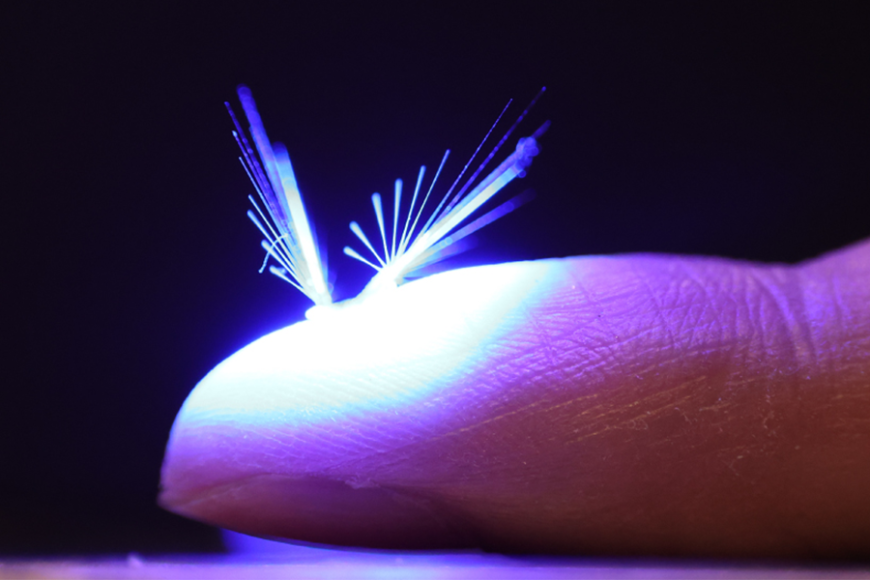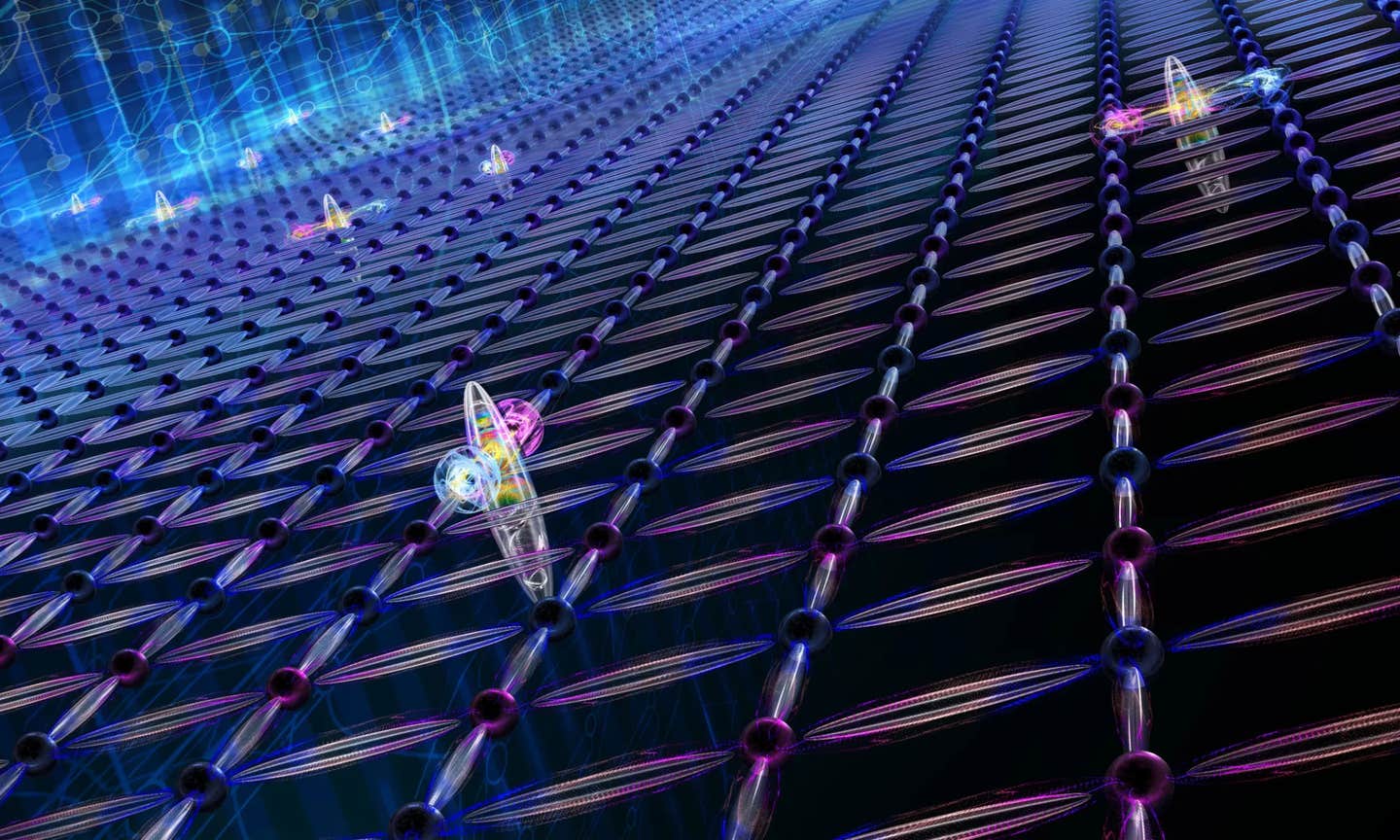Magical fairy-like robot flies by the power of wind and light
Researchers have come up with a new design for their project called FAIRY – Flying Aero-robots based on Light Responsive Materials Assembly.

[Feb. 1, 2023: Anna Aatinen, Tampere University]
For their artificial fairy, Hao Zeng and Jianfeng Yang got inspired by dandelion seeds. (CREDIT: Jianfeng Yang / Tampere University)
The development of stimuli-responsive polymers has brought about a wealth of material-related opportunities for next-generation small-scale, wirelessly controlled soft-bodied robots. For some time now, engineers have known how to use these materials to make small robots that can walk, swim and jump. So far, no one has been able to make them fly.
Researchers of the Light Robots group at Tampere University are now researching how to make smart materials fly. Hao Zeng, Academy Research Fellow and the group leader, and Jianfeng Yang, a doctoral researcher, have come up with a new design for their project called FAIRY – Flying Aero-robots based on Light Responsive Materials Assembly. They have developed a polymer-assembly robot that flies by wind and is controlled by light.
“Superior to its natural counterparts, this artificial seed is equipped with a soft actuator. The actuator is made of light-responsive liquid crystalline elastomer, which induces opening or closing actions of the bristles upon visible light excitation,” explains Hao Zeng.
The artificial fairy is controlled by light
The artificial fairy developed by Zeng and Yang has several biomimetic features. Because of its high porosity (0.95) and lightweight (1.2 mg) structure, it can easily float in the air directed by the wind. What is more, a stable separated vortex ring generation enables long-distance wind-assisted travelling.
Related Stories
“The fairy can be powered and controlled by a light source, such as a laser beam or LED,” Zeng says.
This means that light can be used to change the shape of the tiny dandelion seed-like structure. The fairy can adapt manually to wind direction and force by changing its shape. A light beam can also be used to control the take-off and landing actions of the polymer assembly.
Potential application opportunities in agriculture
Next, the researchers will focus on improving the material sensitivity to enable the operation of the device in sunlight. In addition, they will up-scale the structure so that it can carry micro-electronic devices such as GPS and sensors as well as biochemical compounds.
Responsive polymer allows the creation of artificial, autonomously operating structures. In dark and calm weather, the fairy stays still. When there is enough light, the structure opens automatically allowing flying in the wind flow. (CREDIT: Jianfeng Yang / Tampere University)
According to Zeng, there is potential for even more significant applications.
“It sounds like science fiction, but the proof-of-concept experiments included in our research show that the robot we have developed provides an important step towards realistic applications suitable for artificial pollination,” he reveals.
In the future, millions of artificial dandelion seeds carrying pollen could be dispersed freely by natural winds and then steered by light toward specific areas with trees awaiting pollination.
Dandelion-inspired disperser. Top-views and side-view photos of natural dandelion and artificial disperser. (CREDIT: Advanced Science)
“This would have a huge impact on agriculture globally since the loss of pollinators due to global warming has become a serious threat to biodiversity and food production,” Zeng says.
Challenges remain to be solved
However, many problems need to be solved first. For example, how to control the landing spot in a precise way, and how to reuse the devices and make them biodegradable? These issues require close collaboration with materials scientists and people working on microrobotics.
Light controlled lift-off and landing. Series of photographs showing the passive dispersal of structures upon light cessation a) and light irradiation. (CREDIT: Advanced Science)
The FAIRY project started in September 2021 and will last until August 2026. It is funded by the Academy of Finland. The flying robot is researched in cooperation with Dr. Wenqi Hu from Max Planck Institute for Intelligent Systems (Germany) and Dr. Hang Zhang from Aalto University.
The article Dandelion-Inspired, Wind-Dispersed Polymer-Assembly Controlled by Light by Jianfeng Yang, Hang Zhang, Alex Berdin, Wenqi Hu, and Hao Zeng was published in Advanced Science.
Note: Materials provided above by Tampere University. Content may be edited for style and length.
Like these kind of feel good stories? Get the Brighter Side of News' newsletter.
Joseph Shavit
Head Science News Writer | Communicating Innovation & Discovery
Based in Los Angeles, Joseph Shavit is an accomplished science journalist, head science news writer and co-founder at The Brighter Side of News, where he translates cutting-edge discoveries into compelling stories for a broad audience. With a strong background spanning science, business, product management, media leadership, and entrepreneurship, Joseph brings a unique perspective to science communication. His expertise allows him to uncover the intersection of technological advancements and market potential, shedding light on how groundbreaking research evolves into transformative products and industries.



